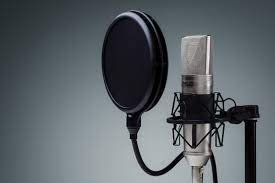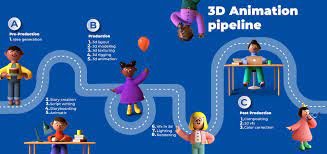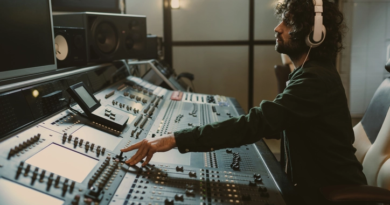What Training is Needed For Voice Over? Best Training. Are Voice Over Artists in Demand?
Voice over is a unique field that requires a specific set of skills and training to excel. Voice over artists are the individuals who lend their voices to various projects such as commercials, animated films, audiobooks, video games, and more. To become a successful voice-over artist, there are several training methods that one can pursue. In this article, we will discuss the different types of training available and what they entail.
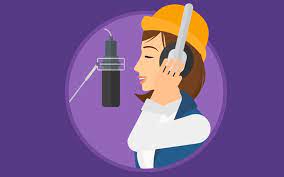
- Voice Acting Classes One of the most important types of training for voice-over artists is voice acting classes. These classes teach aspiring voice actors the basic techniques of voice acting such as how to breathe, how to project their voice, how to use different tones and inflections, and how to create a character. Voice acting classes can be taken in person or online and can range from a few weeks to several months.
- Vocal Training Vocal training is another essential aspect of voice-over training. Vocal training helps aspiring voice-over artists to develop their vocal range, stamina, and overall voice quality. This type of training can include exercises such as vocal warm-ups, breathing techniques, and vocal exercises designed to improve the clarity and quality of the voice.
- Improv Classes Improvisational acting classes can be beneficial for aspiring voice-over artists. These classes teach students how to think quickly on their feet, develop a character on the fly, and improvise lines and situations. Improv classes can help voice-over artists to be more spontaneous and natural in their delivery.
- Dialect Training Dialect training is crucial for voice-over artists who are required to do accents or dialects. These classes teach students how to speak in different accents, inflections, and dialects. It’s important for voice-over artists to have a broad range of accents and dialects in their repertoire as this can increase their job opportunities.
- Script Analysis Script analysis is an essential aspect of voice-over training. Voice-over artists must be able to analyze and interpret scripts quickly and efficiently. This training teaches students how to read scripts, understand their meaning, and deliver them effectively.
- Home Recording Studio Setup In today’s world of remote work, it’s essential for voice-over artists to have a home recording studio set up. Voice-over artists must be able to record their voice at home and deliver high-quality recordings to their clients. Training on how to set up a home recording studio can be beneficial for aspiring voice-over artists.
- Networking Networking is crucial for voice-over artists to succeed in the industry. Voice-over artists must be able to build relationships with clients and other professionals in the industry. Training on how to network effectively can help aspiring voice-over artists to build connections and increase their job opportunities.
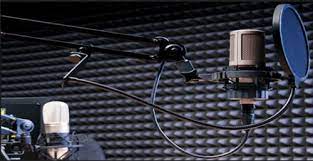
In conclusion, there are many different types of training available for voice-over artists. Voice acting classes, vocal training, improv classes, dialect training, script analysis, home recording studio setup, and networking are all essential aspects of voice-over training. Aspiring voice-over artists must be committed to learning and improving their skills continually. With the right training and dedication, anyone can become a successful voice-over artist.
Are Voice Over Artists in Demand?
Yes, voice over artists are in high demand in today’s entertainment industry. The rise of streaming services and the growth of digital media have led to an increase in demand for voice-over artists. Voice-over work can be found in various areas such as animation, commercials, audiobooks, video games, and more. Voice-over artists are required to lend their voices to characters in animation, provide narration for commercials, and even record audiobooks for the visually impaired. Here are some reasons why voice over artists are in high demand:
- Animation The animation industry is a significant source of voice-over work. Voice-over artists are required to lend their voices to characters in animated films, TV shows, and video games. Animation is a popular form of entertainment, and with the rise of streaming services, the demand for new content has increased. This has led to an increase in demand for voice-over artists to provide voices for new characters.
- Commercials Voice-over work is also in high demand in the advertising industry. Commercials require voice-over artists to provide narration and voiceovers for TV and radio ads. With the growth of digital advertising, the demand for voice-over artists has increased even more. Companies are now creating more online video content, which requires voice-over work.
- Audiobooks Audiobooks have become increasingly popular in recent years. Many people prefer listening to audiobooks over reading them. This has led to a surge in demand for voice-over artists to record audiobooks. With the growth of audiobook platforms such as Audible, the demand for voice-over artists in this field is only going to increase.
- Video Games Video games are another area where voice-over artists are in high demand. Video games require voice-over artists to provide voices for characters in the game. As video games become more popular, the demand for voice-over artists in this field is expected to increase.
- E-Learning E-learning is another area where voice-over artists are in high demand. E-learning courses often require narration and voiceovers. As e-learning continues to grow, the demand for voice-over artists in this field is expected to increase.

In conclusion, voice-over artists are in high demand in today’s entertainment industry. With the growth of streaming services, digital media, and new forms of entertainment, the demand for voice-over work is only going to increase. Aspiring voice-over artists should focus on developing their skills and building their portfolio to increase their job opportunities in this industry. With dedication and hard work, anyone can become a successful voice-over artist.
Voice over is a unique field that requires a specific set of skills and training to excel. Voice over artists are the individuals who lend their voices to various projects such as commercials, animated films, audiobooks, video games, and more. To become a successful voice-over artist, there are several training methods that one can pursue. In this article, we will discuss the different types of training available and what they entail.

- Voice Acting Classes One of the most important types of training for voice-over artists is voice acting classes. These classes teach aspiring voice actors the basic techniques of voice acting such as how to breathe, how to project their voice, how to use different tones and inflections, and how to create a character. Voice acting classes can be taken in person or online and can range from a few weeks to several months.
- Vocal Training Vocal training is another essential aspect of voice-over training. Vocal training helps aspiring voice-over artists to develop their vocal range, stamina, and overall voice quality. This type of training can include exercises such as vocal warm-ups, breathing techniques, and vocal exercises designed to improve the clarity and quality of the voice.
- Improv Classes Improvisational acting classes can be beneficial for aspiring voice-over artists. These classes teach students how to think quickly on their feet, develop a character on the fly, and improvise lines and situations. Improv classes can help voice-over artists to be more spontaneous and natural in their delivery.
- Dialect Training Dialect training is crucial for voice-over artists who are required to do accents or dialects. These classes teach students how to speak in different accents, inflections, and dialects. It’s important for voice-over artists to have a broad range of accents and dialects in their repertoire as this can increase their job opportunities.
- Script Analysis Script analysis is an essential aspect of voice-over training. Voice-over artists must be able to analyze and interpret scripts quickly and efficiently. This training teaches students how to read scripts, understand their meaning, and deliver them effectively.
- Home Recording Studio Setup In today’s world of remote work, it’s essential for voice-over artists to have a home recording studio set up. Voice-over artists must be able to record their voice at home and deliver high-quality recordings to their clients. Training on how to set up a home recording studio can be beneficial for aspiring voice-over artists.
- Networking Networking is crucial for voice-over artists to succeed in the industry. Voice-over artists must be able to build relationships with clients and other professionals in the industry. Training on how to network effectively can help aspiring voice-over artists to build connections and increase their job opportunities.

In conclusion, there are many different types of training available for voice-over artists. Voice acting classes, vocal training, improv classes, dialect training, script analysis, home recording studio setup, and networking are all essential aspects of voice-over training. Aspiring voice-over artists must be committed to learning and improving their skills continually. With the right training and dedication, anyone can become a successful voice-over artist.
Are Voice Over Artists in Demand?
Yes, voice over artists are in high demand in today’s entertainment industry. The rise of streaming services and the growth of digital media have led to an increase in demand for voice-over artists. Voice-over work can be found in various areas such as animation, commercials, audiobooks, video games, and more. Voice-over artists are required to lend their voices to characters in animation, provide narration for commercials, and even record audiobooks for the visually impaired. Here are some reasons why voice over artists are in high demand:
- Animation The animation industry is a significant source of voice-over work. Voice-over artists are required to lend their voices to characters in animated films, TV shows, and video games. Animation is a popular form of entertainment, and with the rise of streaming services, the demand for new content has increased. This has led to an increase in demand for voice-over artists to provide voices for new characters.
- Commercials Voice-over work is also in high demand in the advertising industry. Commercials require voice-over artists to provide narration and voiceovers for TV and radio ads. With the growth of digital advertising, the demand for voice-over artists has increased even more. Companies are now creating more online video content, which requires voice-over work.
- Audiobooks Audiobooks have become increasingly popular in recent years. Many people prefer listening to audiobooks over reading them. This has led to a surge in demand for voice-over artists to record audiobooks. With the growth of audiobook platforms such as Audible, the demand for voice-over artists in this field is only going to increase.
- Video Games Video games are another area where voice-over artists are in high demand. Video games require voice-over artists to provide voices for characters in the game. As video games become more popular, the demand for voice-over artists in this field is expected to increase.
- E-Learning E-learning is another area where voice-over artists are in high demand. E-learning courses often require narration and voiceovers. As e-learning continues to grow, the demand for voice-over artists in this field is expected to increase.

In conclusion, voice-over artists are in high demand in today’s entertainment industry. With the growth of streaming services, digital media, and new forms of entertainment, the demand for voice-over work is only going to increase. Aspiring voice-over artists should focus on developing their skills and building their portfolio to increase their job opportunities in this industry. With dedication and hard work, anyone can become a successful voice-over artist.

